Strand7 Software: In Detail: Composites: Pre Processing
Laminated composites capabilities
| Strand7 may be used for the analysis of laminated composites via dedicated pre processing, solver and post processing modules. Both symmetric and unsymmetric laminated composites are supported. | |
Pre ProcessingArbitrary alignment of the plate local systemThe local element axes may be arbitrarily orientated to allow easy definition of the material axes with respect to the element. This allows each laminate definition to be assigned to any number of elements. The orientation of the local axes then defines the transformation of the material matrix for the element. | |
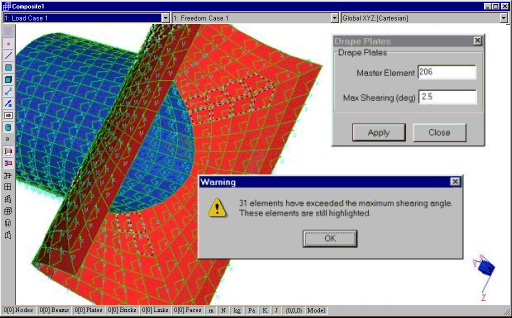
| |
Automatic draping of material axes The element axes can be automatically "draped" over complex models. This involves the selection of a range of elements, together with a master element. The material axes then "grow" outward from this master element analogous to draping a sheet over the model. For models with double curvature, there is a Maximum Shearing Angle parameter which informs you if the draping operation will cause in-plane shearing of the sheet. | |
Graphical definition of ply lay-up To allow easy input and visualisation of the lay-up, the laminate stack can be defined and edited using the graphical Laminate Preprocessor. It requires the selection of the Ply Material and Ply angle for each ply in the laminate. The Laminate Preprocessor supports cut/paste operations to and from the Windows clipboard. Quasi-isotropic, unidirectional, bidirectional and tridirectional composites are identified graphically. | |
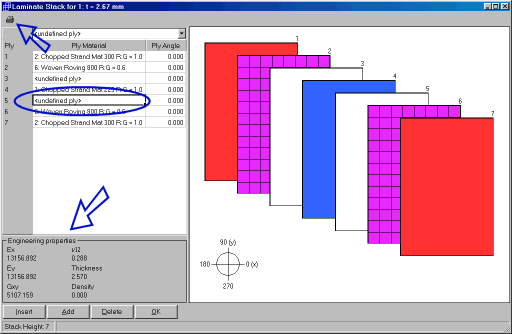
| |
Input Screens for the definition of material data and limits The ply is defined by entering two values of modulus, the shear modulus and a Poisson's ratio. The ply density is used to determine the effective density of the laminate. Note that the thickness may be defined either at the ply definition level or at the laminate lay-up level. Ply definition thickness is useful for standard commercially available ply sheets, so that the ply thickness is defined just once, not every time the ply is used. | |
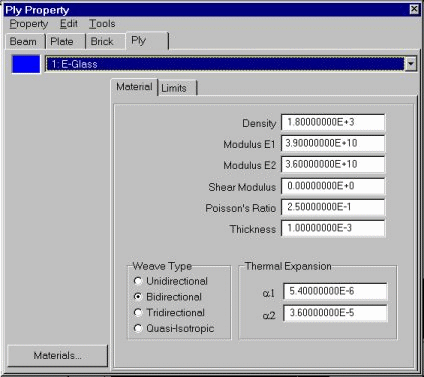
| |
Reserve factors based on a number of different failure criteria are available. The calculation of reserve factors uses the entries entered in the Material Limits panel. Not all entries need to be defined. | |
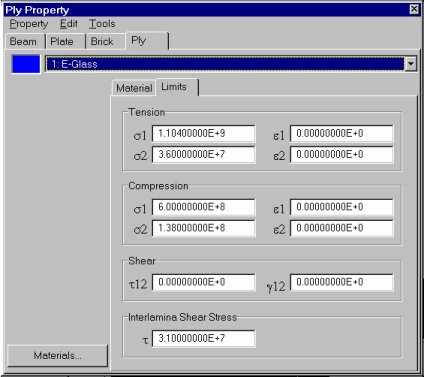
| |
User configurable Material Database for the selection of material properties To help avoid numerical input errors, the element materials can be read directly from a database. The database is expandable and user configurable. It is also "units aware"; data can be entered in any set of units and these will be converted correctly to other unit systems when importing into other models. | |
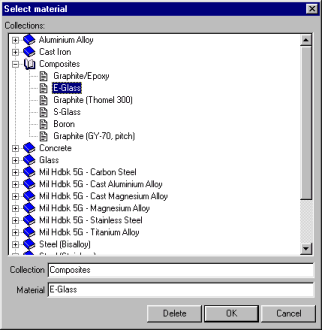
| |
Visual checking of material matrices and equivalent engineering properties The element stiffness matrix can be visually checked and includes the option to ignore Membrane/Bending coupling; in some cases the coupling matrix can be generated as a result of numerical round-off and so it is better to exclude it from the element stiffness matrix. Equivalent engineering properties are also given including Ex, Ey, Poisson's Ratio, Laminate Thickness and Laminate Density. The composite thermal expansion coefficients are automatically calculated from the individual ply values. | |

| |
Printing the layup Layup details can be easily printed for inclusion in reports. | |
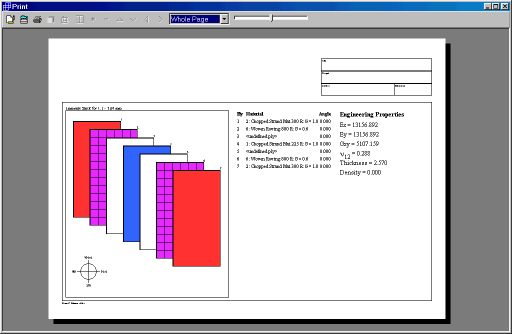
| |
|
For more information on laminate/composite material applications, see Strand7 Webnotes - Applications / Composites. | |

 Menu
Menu